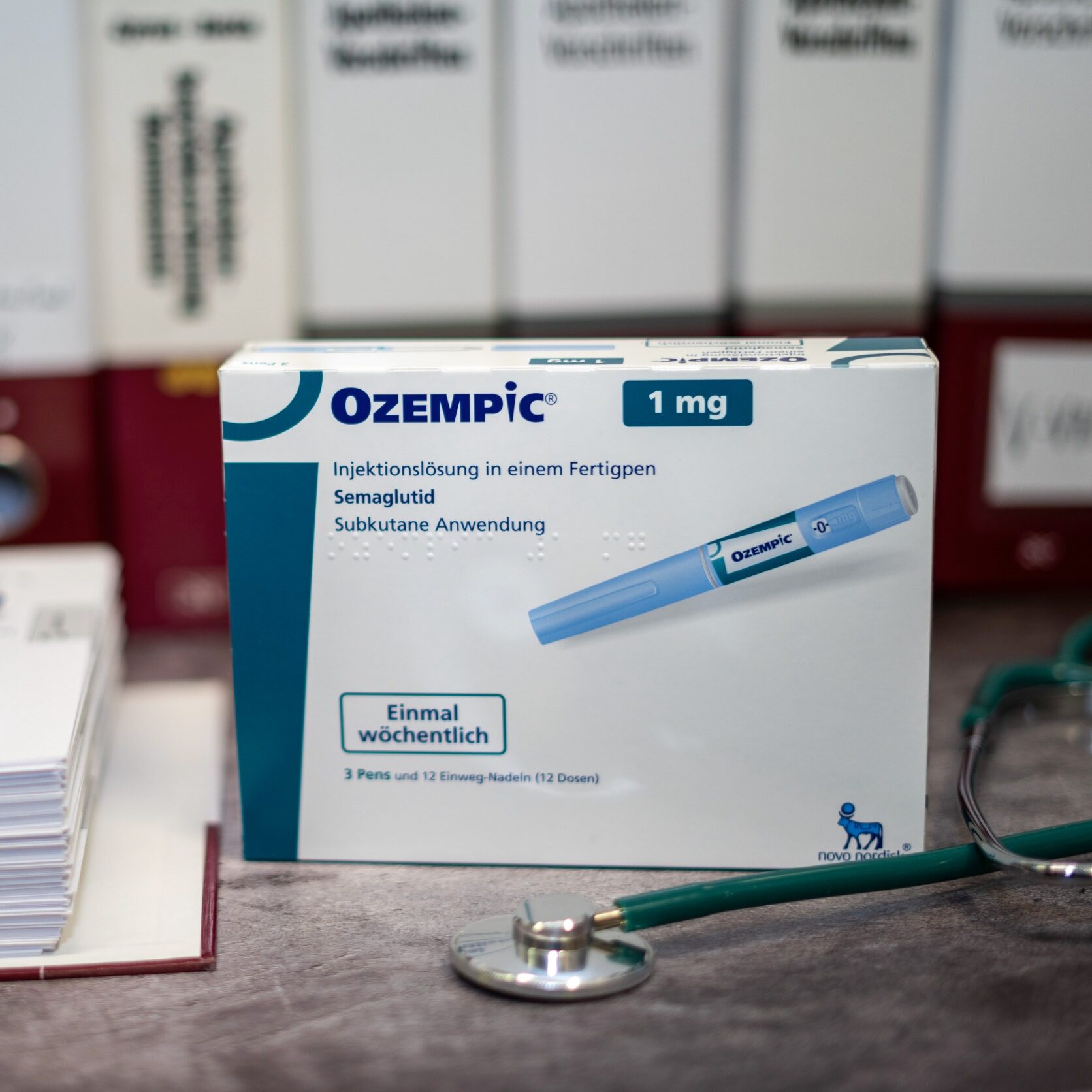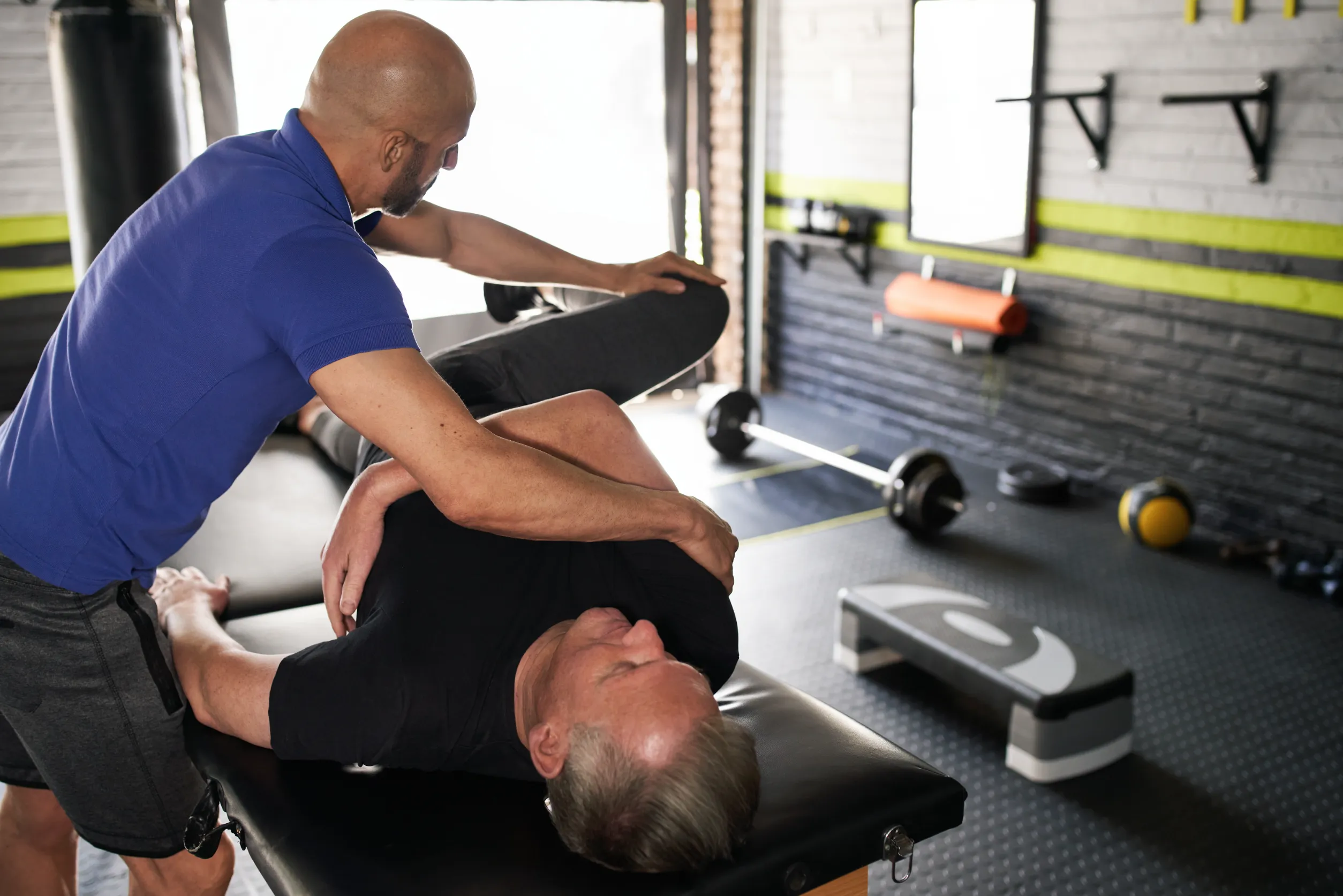One reason the Bodysmith is the best fitness and training gym in Omaha is our members. Every member brings something special to our group and helps build a sense of community unlike that at any other gym around. But there is one certain person who, just by walking in the door, can light up the entire gym. If you’ve met him, you already know his name. If not, let me take this chance to introduce you to Marcus.
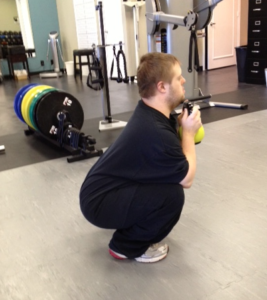
Marcus is 23 years old and has been a member at the Bodysmith, along with his parents, for more than three years. His enthusiasm and joy are contagious…from the moment he walks in our door he is greeted like a celebrity and is quick to point out that every person he sees is “the best.” Marcus makes friends quickly and easily. Marcus was also born with Down syndrome.
When we design a training program for Marcus we follow the same process that we do for all our members. Working from our fundamental principles, we take into account the individual’s strengths, weaknesses, and medical concerns to create a program tailored to her or his body. After talking with Marcus and his parents, I thought he would be an ideal member to use to show just how important and far-reaching our program design needs to be, and at the same time show how to safely and effectively design exercise programs for individuals with Down syndrome.
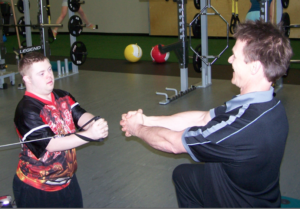
Someone with Down syndrome will benefit from exercise like everybody else and can struggle with typical conditions such as obesity and diabetes. However, they are also prone to some atypical conditions that must be taken into account in regards to exercise, including:
To make exercise safe and effective for these individuals we focus on:
- Hypermobility. These individuals’ ligaments and joints are often able to stretch far beyond normal limits. This leads to an increased chance of injuries such as joint dislocation and subluxation. Of special interest is subluxation of the 1st cervical 2nd cervical vertebrae known as atlantoaxial instability (AAI) which can result in spinal cord injury.
- Hypotonicity. People with Down syndrome generally have low amounts of muscle mass that is able to stretch beyond normal limits further adding to the instability of their musculoskeletal system.
- Congenital heart defects. Many of these defects are corrected shortly after birth and present no problems later in life, but care must still be taken when exercising as these individuals can have diminished cardiorespiratory capacity.
- Stabilizing the core by paying extra attention to the spine and hips. Many variations of hip bridging, planks, and anti-rotational exercises should be used to increase proprioception (nervous system sensitivity around joint structures) and keep the spine safe.
- Shortening the range of motion (ROM) to prevent joint and muscle injury in other areas.
- Paying close attention to the tempos of exercise because exercises with quick movements can expose these individuals to increased risk of injury. In fact, we emphasize slow tempos.
- Keeping programs short and interesting. Like the rest of us, someone with Down syndrome may not always feel like exercising but if I can make the session engaging and fun we get more accomplished. I have found that 30min sessions work great for Marcus and we often rename exercises to keep him interested. We will also turn exercise into a game (he enjoys chasing me while pushing a prowler sled) and when Marcus is not “feeling it,” I let him pick some of his favorite exercises and we focus on them for our session.
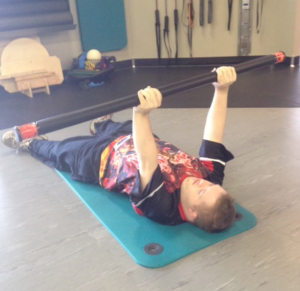
Floor Press to control range of motion
Everyone who knows Marcus looks forward to seeing him and they are consistently inspired by his efforts in the gym. Like all of his friends, we are just glad to know him and spend time with him. Recently a member brought him a batman shirt complete with cape. The site of him running on the treadmill as I flapped his cape behind him drew cheers from the gym and he could not have been happier.
– Coach Brad
